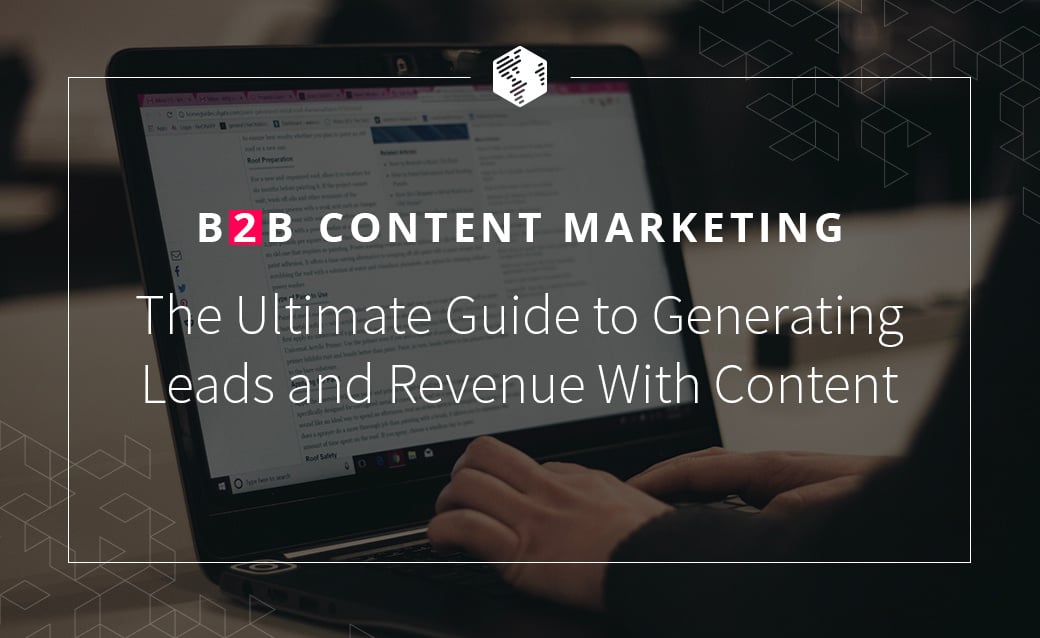Table Of Contents
What is B2B Content Marketing?
Content marketing is the process of creating helpful content and using it to build trust with your ideal customers — so that you can promote your product or service to them for increased revenue.
B2B content marketing is then the process of creating content and promoting it to convert other businesses into your customers.
And there are tons of different b2b content marketing strategies and channels you can use such as social media, blogs, videos, white papers, and more.
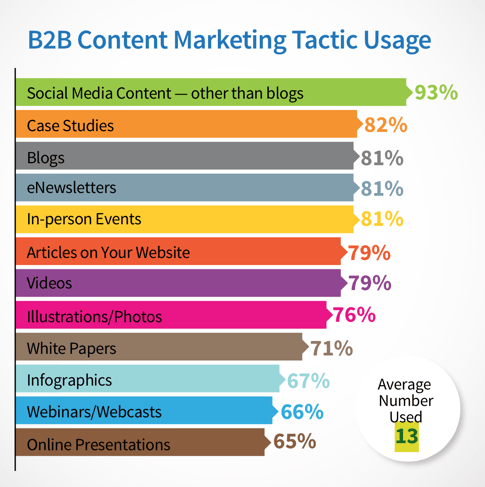
Another type of content marketing you’ll hear about is B2C marketing which means “Business to Consumers.”
And while there are basic content marketing rules that apply to all types of content marketing, there are important differences.
Bad news first: it usually takes more effort to convert another business to be your customer. Because they have to be convinced that your product or service isn’t going to lose money for their business.
The good news though, is that you can retain a B2B customer for years and continue to make profits from them for years.
Having said that, how do you market your content to convince other businesses to buy your product or subscribe to your service?
That’s the big question I’ll answer in this guide. Content marketing is a big opportunity for any business. But only for those who can use it effectively.
For instance, statistics have shown that content marketing generates 3 times more leads and costs 62% less than outbound strategies. Furthermore, businesses that carry out proper B2B content marketing campaigns boost their conversions by 6 times on average.
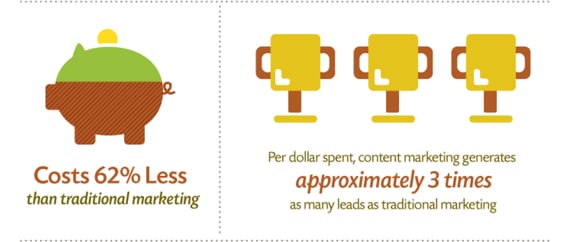
Despite all its benefits, there’s still a lot that marketers can do with their B2B content marketing strategies. In a study, only 30% of B2B marketers think their organization is effective with the use of content marketing. So, how can organizations get more from content marketing?
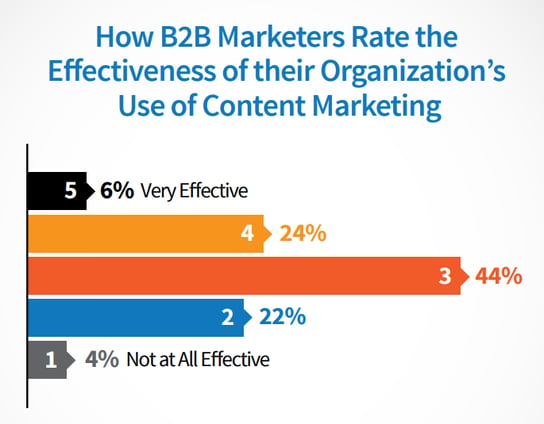
How to Find Content Ideas and Write B2B Content
Usually, consumers and businesses have different needs when making purchasing decisions. These different needs mean they expect different types of content.
How do you create content suitable and attractive to other businesses?
Follow these simple steps:
1. Create a Buyer Persona
If you don’t have a target customer, then your content will be unfocused. Which means you’ll attract no one.
When you have an ideal customer in mind, you can create content specifically for them. And when they read your content, they can resonate better with it and engage more.
This is where the difference between B2B content marketing and B2C content marketing begin to appear.
Even though a person will still make a decision about whether a business should become your customer, they’ll be having different considerations.
The first task to create a buyer persona is to think of the ideal person in a company that can make the purchase decision on behalf of the company. Is it the CEO, COO, CMO?
After selecting the particular employee that can make this decision, then you need to have more details about them and their company. Some of these details are:
-
Name
-
Age
-
Job position
-
Job requirements
-
Needs
-
Goals
-
Challenges
-
Business size
-
Number of employees
-
Company revenue
There are other details you can add to these and you should make your buyer persona as detailed as possible.
When you get these details down, you can produce content that will appeal to your ideal customers.
Of course, your content will repel some visitors. But your ideal potential customers will engage better with it. See an example of a B2B buyer persona showing details about a record store manager:
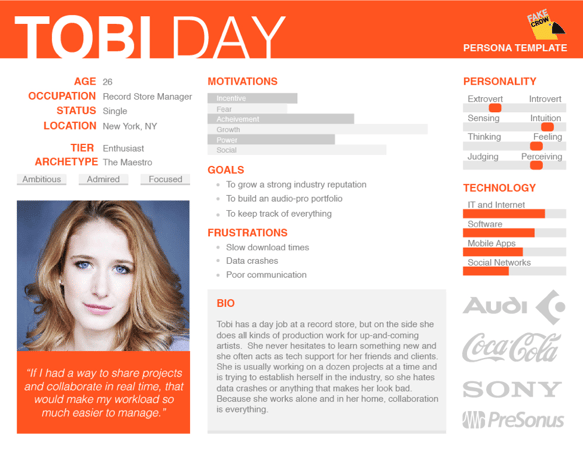
2. Have a goal
Before you start creating a b2b content marketing campaign, you need to have a goal you want to achieve through your content. Some common goals for creating content are:
- Improving brand awareness
- Acquiring leads
- Acquiring customers
Your goal will determine how you create your content. It would also determine the format you use.
Furthermore, your goal will dictate the important metrics for your content campaign. For instance, traffic would be an important metric if your goal is improving brand awareness.
Whereas, the conversion rate would be more important if your aim is to acquire customers.
3. Conduct Keywords Research
Whatever type of marketing you’re doing online, you simply have to show up on search engine results. Why? Because your potential customers are looking for you there.
You can use Ahrefs or SEMrush to find target keywords that your audience is searching for in Google.
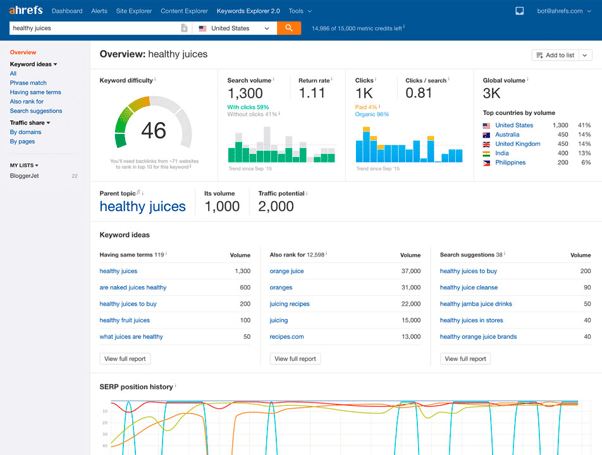
It’s even more important for B2B businesses as they tend to get involved in more research before making a purchase decision.
Now, there will be no point if your website ranks for keywords that your potential customers aren’t searching for. So, you need to find keywords that your customers are searching for. This means you need to find keywords with higher search volumes.
However, while some keywords have high search volumes, they’ll also be very competitive.
Unless you run an authoritative website, it’s almost impossible to rank for those keywords. Therefore, while looking at search volume, you also need to check the completion level.
There should be a balance between search volume and competition. For a new website, you should target long-tail keywords with lower search volumes. Despite the low volumes, these keywords show more intent than head keywords.
There are many tools you can use to find valuable keywords. Some of them are Google keyword planner, Ahrefs, SEMrush, KeywordTool.io, Majestic SEO, Cognitive SEO, Ubersuggest, etc.
To use the Ubersuggest tool, enter your keyword into the tool and click on search.

This will show you more details about the keyword like Search Volume, Search Difficulty, Paid difficulty, and Cost per Click (CPC).

Sometimes, a keyword’s CPC will tell you how valuable marketers see that keyword. If marketers are bidding high for a keyword, it’s usually because it’s valuable. Another detail you get is similar keywords to your keyword.
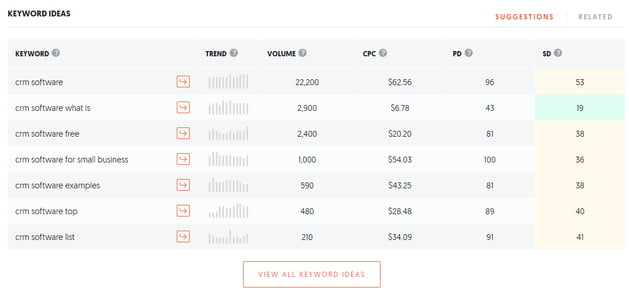
This could give you ideas of keywords to target instead of the one you plan to target. In some cases, you could get more keywords to target later.
Have a keyword list
You can enter many keywords into your keyword research tool until you have a list of keywords.
With this list, you have ideas for producing content for a period of time. At the same time, your content can have a better focus to attract the right clients.
B2B Content Marketing Strategies
To make your content effective, you need strategies to get it across to the right people at the right time. Building a proper B2B content marketing campaign relies on the following strategies.
1). Competitive Analysis
No matter what your business is, you have competitors. Even if you don’t outperform them in the organic search results, there’s a lot you can learn from them.
“Conducting a competitor analysis can help you to get ahead in your online marketings strategy,” says Nikolai Boroda.

When it comes to B2B content marketing, some of your competitors are ahead of you.
They’ve done many tests and found some effective tactics. Why go through the same stress? Why not just spy on your competitors, steal those tactics, and adapt them to your business? It’s totally legitimate.
In many situations, competitive analysis saves you time and effort while still producing the results you want. What are some aspects of your competitors you should analyze?
i). Content: At every stage of the sales funnel, content is a vital element. If you have a competitor performing well, they’re probably producing good content.
You have to analyze what type of content they use at each stage of the sales funnel. Other traits to check in their content are:
- Length
- Format
- The frequency of producing content
If you run a new website, your competitors can teach you a lot about how to publish the best content possible.
If your competitors are performing very well, that’s usually because they’ve done many tests and have arrived at the type of content that achieve results.
ii). Find keyword gap: Even with proper keyword research, it’s possible to miss out on some valuable keywords.
That’s why you need to know some keywords your competitors rank for that you’re not targeting. Then you can create engaging content to fill that gap — and drive targeted leads to your business.

You can use a tool like SEMrush to find your competitors based on the similarity of your content. Added to that, you can find keyword gaps between you and the competitor.
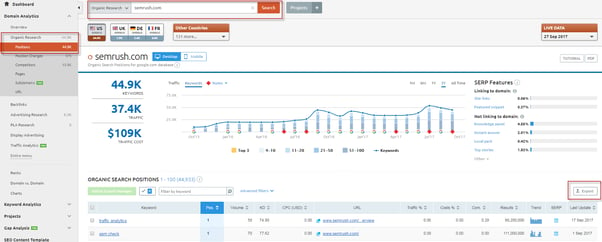
Of course, not all the keywords will be useful, but you can find some gems there. Apart from keywords, you can also subscribe to their email updates to see how they market their content through email.
2). Map Out the Customer Journey
What plans do you have in place to convert website visitors to customers? What stages do you want them to go through?
When you map out your customer journey from the awareness stage to the purchase, you can easily produce content for each stage.
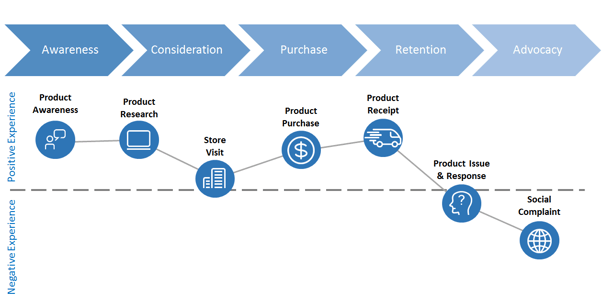
An important question to ask about your customer journey is:
“What message do you want a potential customer to get about your service at each stage of the customer journey?”
If you can answer this question effectively, you can create content that will deliver these messages. Of course, for your customer journey, you need different types of content such as:
-
Blog posts
-
Landing page content
-
Email messages
-
Videos
-
Whitepaper
-
Podcasts
Without a proper plan for your customer journey, it becomes difficult to assign a type of content for a particular stage.
3). Have a Content Calendar
Creating great content is difficult. A study by the Content Marketing Institute reveals that 54% of B2B content marketing campaigns struggle to produce engaging content, while 49% find it difficult to measure their content effectiveness.
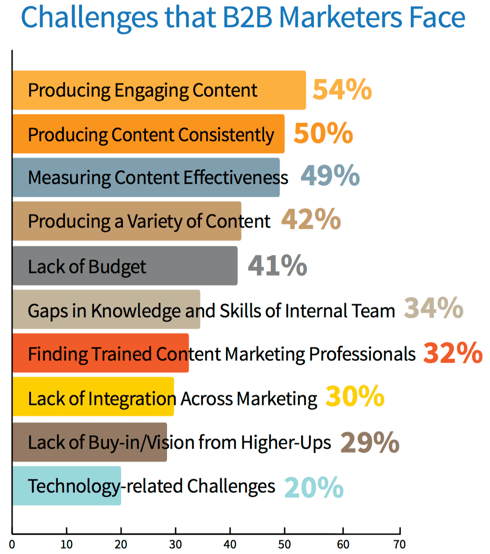
Without a content calendar, you might end up being inconsistent with your content production. What type of content does your potential customer resonate with best? How often do you want to publish this type of content?
Your content calendar should contain dates to publish a piece of content on your website or to send an update to your email subscribers.
How many social media updates will you post on your profiles and on which platform?
Some of these content, like email messages and social media updates, can be published automatically using automated email and social media software packages.
4). Track Your Progress
Producing content is good, but it’s only a means to an end. If your content is not marketing your service effectively, then it’s failing at its job. In the words of Peter F. Drucker, “what is measured, improves.”
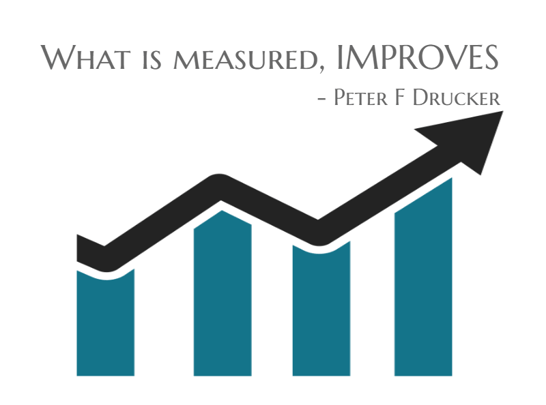
This is why you must track your progress in comparison with your goals. How many leads is a landing page capturing? Is there a way to improve on that result?
When you track your progress, you can see if your content will help you achieve your b2b content marketing goals.
5). Revise and Update Your Strategy
In cases where your b2b content marketing is unable to produce the expected results, you need to revise and update your strategy. Let’s be honest, there’s no strategy that works all the time.
Even if this strategy has worked for some, it doesn’t mean it’ll work for you.
This is why no strategy should be rigid. A strategy is only as good as the results it can bring for your business.
6). Optimize Content for Your Target Keyword
A major part of marketing your business is to show up online. As I’ve explained earlier in this guide, you should carry out keyword research to see what your potential customers are searching for.
After doing this, you should already have a list of keywords you want to target. But how do you optimize your content for these keywords?
First of all, your target keyword should appear in the following parts of your page:
- Title
- Meta description
- URL
- First paragraph
- Image name and alt text
Below is an example of an optimized page:
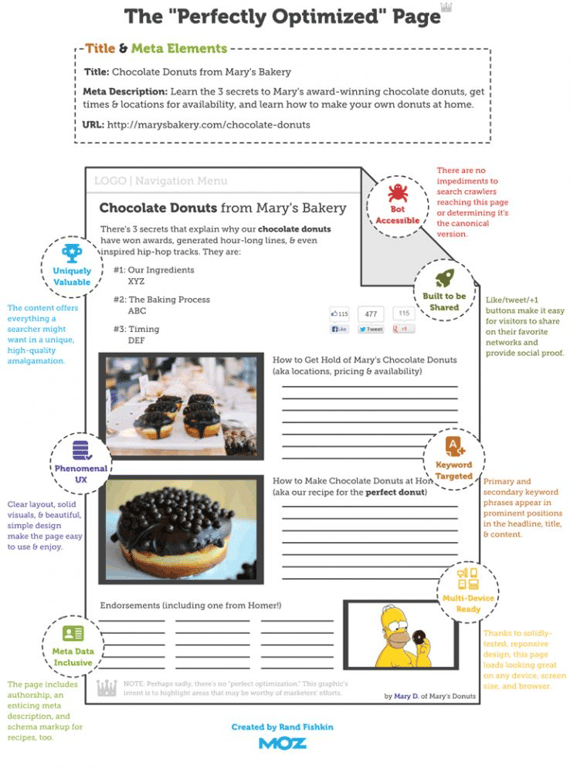
Secondly, you should produce your content to satisfy user intent. The impact of keywords has reduced over the years due to abuse by some content marketers.
And stuffing your content with keywords could get you a penalty rather than a better ranking. What is most important now is understanding user intent.
Why is a searcher putting a keyword in the search box? If someone searches for “buy shoes in Boston,” why are they doing so? What exactly are they looking for?
If you’re targeting this keyword, then your page content should be able to provide the information the searcher is looking for. Which is usually a selection of shoes in this case.
7). Format Your Post for Easier Reading
You can pack all the goodies in the world in your content. But if it’s difficult to read, people won’t engage with your content.
For example, look at this research experiment from Nielsen Norman Group: visitors to your page only read about 20 to 28% of the content.

B2B customers are usually more patient than an average consumer. But even at that, you should format your content to make it easy to read. So much that they can get the information they need without reading every word on the page.
Some tips to help you format your page for easier reading are:
i). Use short sentences: The human brain finds it easier to comprehend shorter sentences. You should always try to cut long sentences into two.
ii). Use short paragraphs: A long paragraph on a web page can be overwhelming for a reader and even make them abandon your page. In most cases, don’t have more than 3 sentences in a paragraph.
Check out this example of short paragraphs on Jeff Bullas’ blog:
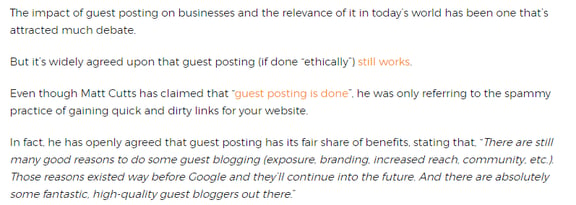
You can see that it’s easier to read such a post compared to one that’s long with no white space.
iii). Use subheadings: This helps you to divide your post into parts based on the points you’re making. It can help readers to understand your content better. Plus, a reader can easily scan and skim the post and move on.
iv). Use numbering and bullets: While making lists, it’s easier for readers when you use numbering or bullets.
8). Repurpose Your Best Content
The most popular type of b2b content is written. However, other content types are catching up. And to attract all possible potential customers, you need to have your content in other formats apart from the written content.
Because some of your visitors understand content in other formats better. Some formats you should try are:
i). Videos
This has become one of the most popular content types over the years. Especially with YouTube being the second largest search engines and one of the most popular websites online.
Videos are especially useful for tutorials about your service. People can watch these videos and follow the instructions.
In years to come, videos will play an important role in content marketing and marketers should produce content in this format. In fact, Cisco estimates that videos will account for 82% of consumer internet traffic by 2021.
ii). Infographics
This is a type of content used to explain the complex concept with diagrams and few words. Most people understand visual messages faster than written.
Studies have shown that people remember 65% of visual content 3 days after viewing it compared to only 10% of written content.
In fact, it’s 323% better for people to follow instructions with graphical illustrations.
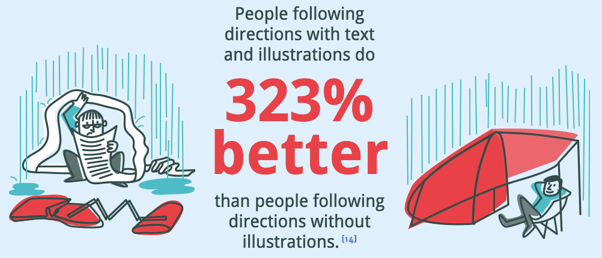
iii). Podcasts
This is an audio format of your content. Many executives who can make the decision to buy your product are busy.
An advantage a podcast has is that people can listen while doing other things. For instance, people can listen during exercise or while driving.
There’s an increase in the number of people listening to podcasts.
A study by Edison Research and Triton Digital reveals that 26% of Americans listen to podcasts in 2018. That’s up from 24% in 2017. When you consider it, 26% of Americans are about 73 million people.
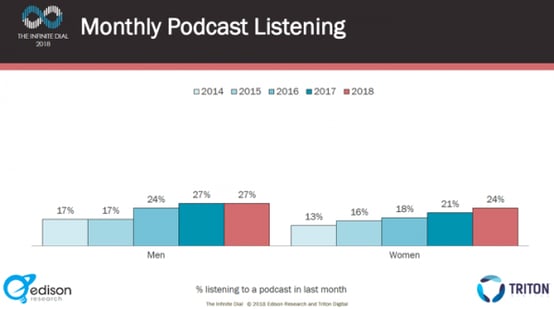
iv). Slides
This is used for presentation. If you’re going to meet an executive to convince them to go for your service, you have a short time.
Dumping literature of 5,000 words would be ineffective.
You have to summarize your bulky b2b content into slides that your potential customer can understand. They must understand your service’s benefits through your slide presentation.
Having content in these formats ensure you’re providing the right message.
Furthermore, some of these formats are more suitable for some stages of the sales funnel than others. For instance, you should have a video on a page that explains how your service works.
Look at this landing page where Help Scout uses a video to make comparisons between its service and that of Desk.com:
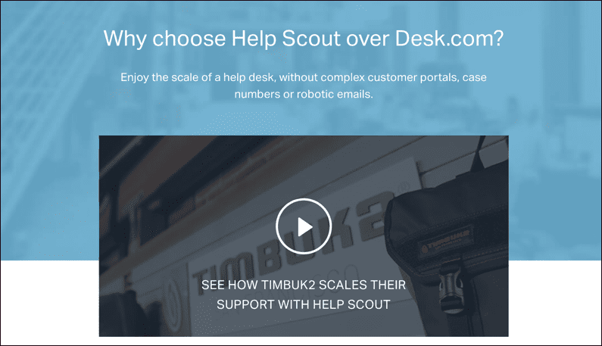
9). Promote Your Content
You’ve heard it many times that great products sell themselves. Don’t kid yourself, that’s only an exception to the rule. The rule is that: great products properly marketed become bestsellers.
If you have the greatest product ever that people don’t know, how do you sell it? You have to market it. You have to make people aware.
To get your content to the right people, you have to promote it. There are many channels of promotion which include:
- Social media
- Search engines
- Advertisements
Promoting your content through these channels mean you can get more people to see it. Added to that, you can pull readers further into your sales funnel.
B2B Content Marketing Examples
Are you still confused about how you can go about creating an effective B2B content marketing campaign?
Don’t worry, there are companies you can check out for inspiration. These are companies that have built a considerable portion of their success in content marketing.
Here are some of them:
i). HubSpot
This is the poster company for content marketing. And this makes sense as the company provides inbound marketing software to businesses.
One of the main reasons for HubSpot’s rise from an $80 million company in 2006 to a $1 billion company in 2016 has been content marketing.

HubSpot runs two blogs to educate its customers and potential customers about their business. These 2 blogs are:
- HubSpot Marketing blog
- HubSpot Sales blog
With these two blogs, the company provides inbound marketing knowledge on topics like blogging, SEO, social media, and other topics that business owners might find useful.
Apart from blogging, HubSpot also provides other types of content like:
-
Case studies
-
eBooks
-
Webinars
-
Quiz
-
Reports
Apart from its two popular blogs, HubSpot also runs Inbound.org which provides educational content and promote their certification and partnership programs. It boasts of about 321,000 visitors monthly.
In fact, one of the most popular reports in the marketing circles is the State of Inbound report by HubSpot. The company uses content pieces like these to capture more leads into its sales funnel.
ii). Leadpages
Leadpages is one of the most popular landing page builders online. With content marketing, the company was able to acquire 35,000 customers in less than 3 years.
This led to over $16 million in revenue in 2015 and the company being placed as the 148th fastest growing company in America. What are the types of content the company used to engage its customers and capture more leads?
a). Blogging: The company has a marketing blog that covers topics important to its customers like landing page design, lead generation, A/B testing, and other related topics.
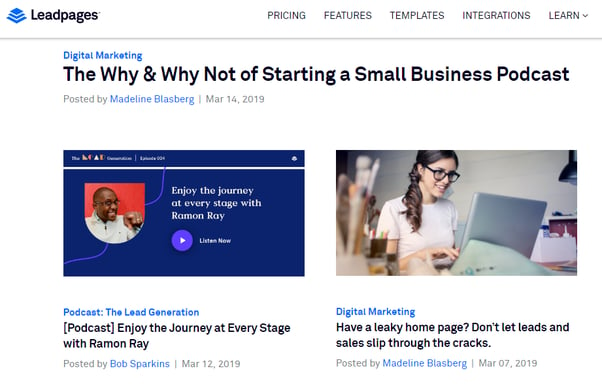
b). Providing marketing resources: These are pieces of content valuable to people building landing pages. It includes 10 case studies, 8 Infographics, and 2 ebooks that are available free of charge.
c). Hosting a podcast: The company hosts a podcast called ConversionCast that’s run by Tim Paige.
iii). Buffer
Buffer is an automated social media marketing tool. And Buffer is a great example of great content marketing.
What are the content marketing strategies that helped Buffer gain their first 100,000 customers within 9 months?
a). Guest Blogging: At the early stage of the company, the founder, Leo Widrich, claimed to have written about 150 guest blogs on various websites. This increased the company’s popularity and they began to gain leads who turned to customers.
b). Blogging: Apart from guest blogging, the company has a blog that publishes valuable content for its users on how to achieve more engagement and better results on social media.
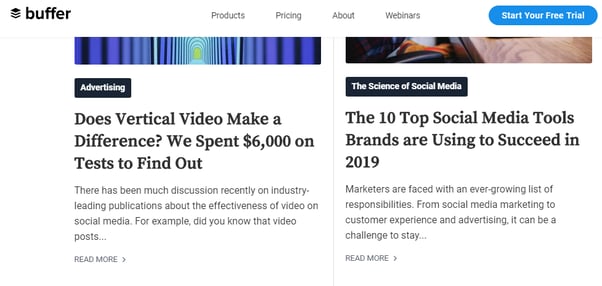
Today, Buffer boasts of almost 400,000 users and about a million followers on social media platforms.
iv). Simply Business
Insurance is an industry that most people consider boring. That’s why it’s commendable that the UK’s largest insurance broker use content marketing to attract more customers.
Since the company’s ideal customers are small business owners, they produced content that their audience would ding useful. These include guides like:
-
A guide to business blogging
-
A Google Ads Guide for small businesses
-
An email productivity guide
-
WordPress for small business guide
-
The small business guide to Facebook
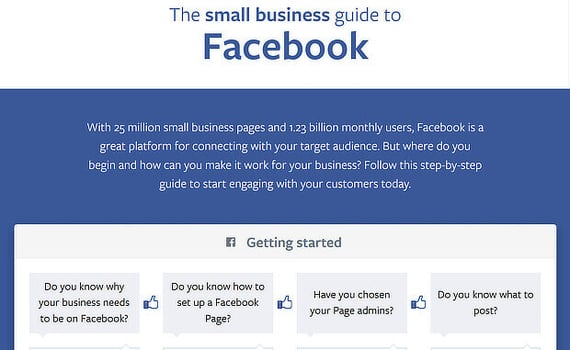
These guides helped them to attract more visitors to their website. More so, they were able to rank first place for important keywords like “public liability insurance,” “employer’s liability,” and “professional indemnity.”
v). WP Engine
WordPress is the most popular content management system. And there are many web hosts out there that support WordPress.
WP Engine provides managed hosting exclusively for WordPress. However, it’s a very competitive market. One of the strategies WP Engine used to acquire over 300,000 websites to its platform is content marketing.
It used its content marketing to provide information about its:
a). Product: The company provided information about its product and new features to customers and potential customers.
b). Business: They also provided content about how businesses have been able to acquire more leads and sales by having an online platform.
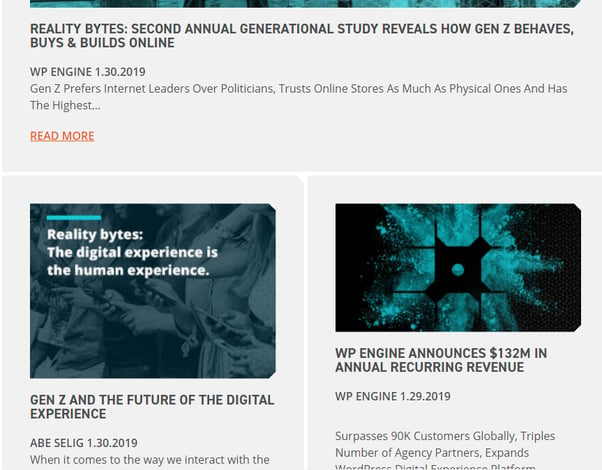
c). Industry: The company also provides information about WordPress and how marketers and agencies use it to build their brands online.
d). Support: WP Engine provides video and written content about common issues that customers might face while using the platform. This is especially important as most customers have little technical knowledge about WordPress.
Best B2B Content Marketing Campaigns
Some businesses have engaged in B2B content marketing campaigns. One thing you’ll see here is that no two content marketing campaign is the same. This is because they have different goals.
Your content marketing campaign will depend on your goals and your audience. Check out some of these campaigns below:
i). GE
General Electric is a large American company. Even though the company has products for consumers, it also provides products and services for businesses.
These are products like jet engines, wind turbines, locomotives, and other products. The company carried out influencer marketing on Instagram.
This involved influencers touring the manufacturing facilities and taking pictures for the #GEInstaWalk campaign.
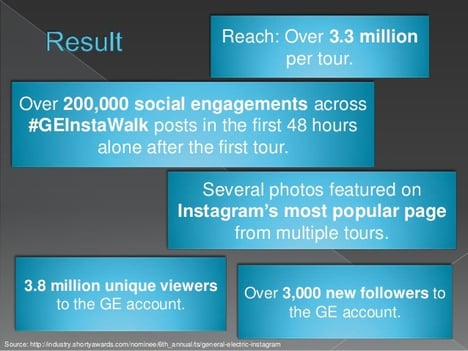
This campaign led to 3.8 million unique views of GE’s Instagram account and 3,000 new followers. This campaign was aimed at changing the company’s perception from a boring one to a design-friendly company.
ii). Superdrug
If you’ve heard about the “Perceptions of perfection,” then you’ve heard about one of this company’s content marketing campaigns. Superdrug is an online doctor company.
The perceptions of perfection campaign involved Superdrug telling graphic designers across the world to make a photoshop of an attractive woman based on their country’s preferences. These images went viral.
They were featured on BuzzFeed where the post has over 3.5 million views. Apart from that, the campaign was also featured on The New York Times, CNN, Yahoo, The Huffington Post, and more.

This is an example of content marketing where the company produced content that its users are likely to resonate with. Or just to improve brand awareness.
iii). JetBlue
Most airline companies have a bad reputation with their customers. From flight delays to ticketing issues to bad customer service, people usually have a reason to complain about airlines.
One airline that tries to build a positive reputation with their customers through content marketing is JetBlue.
This company produces videos that provide more information to its customers about having a wonderful flight.
For instance, one of their campaigns was the “FlyBabies” campaign. Many people have issues while flying with babies. With this video, the company shed more light on how to fly with little ones.
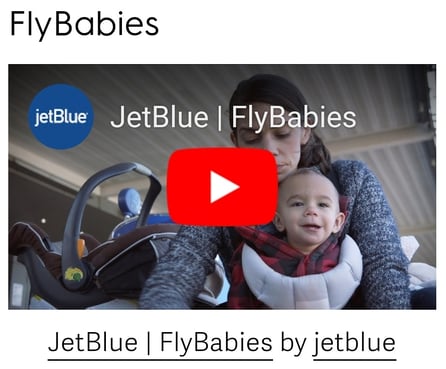
Another of the company’s campaigns is the “Flight Etiquette” campaign which addressed the common issues people have on flights like boarding a plane or even packing a snack.
Conclusion
B2B content marketing requires a unique approach compared to traditional content marketing. Here’s why:
Your main targets are executives, CEOs, and top-level managers who are involved in the decision-making process of their respective companies.
You’re not targeting individual customers who buy emotionally. Most times, without thinking through, or comparing similar products/services.
That said, the foundation of content marketing still applies here. All you have to do is market your content in a way that it attracts your ideal audience (i.e., startup founders, business owners, executives)
Another point you have to take note of when developing a B2B content marketing strategy is that it takes more time to win or convert B2B leads into paying customers.
The cost of generating B2B leads is usually higher compared to B2C leads — so you must be strategic in order not to waste money.
If you need support from our OneIMS B2B digital marketing team, we’re always ready to help you. Talk to a Strategist right now.

